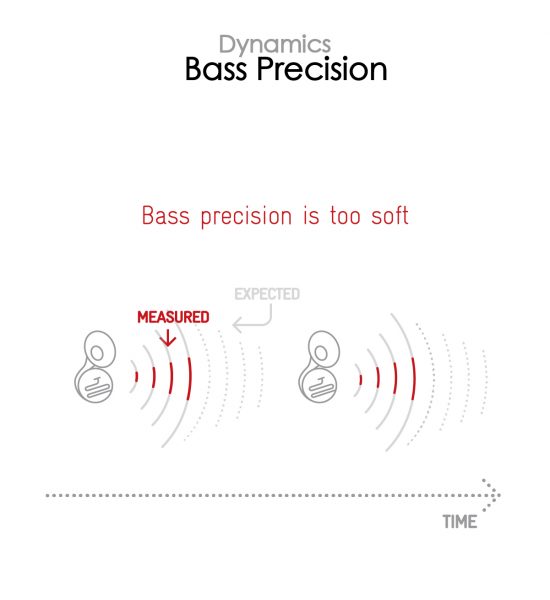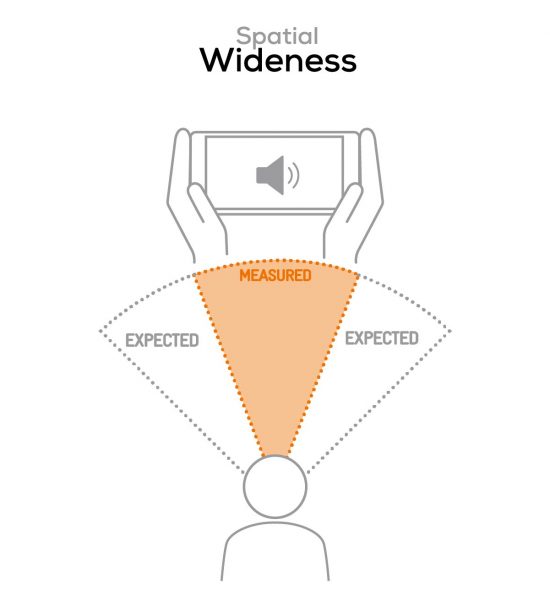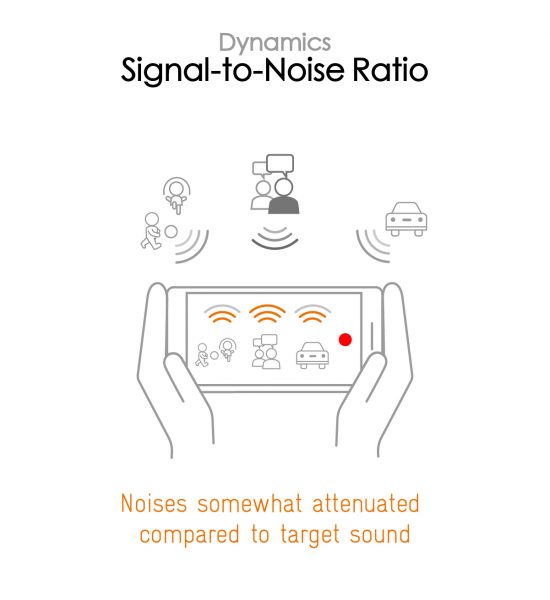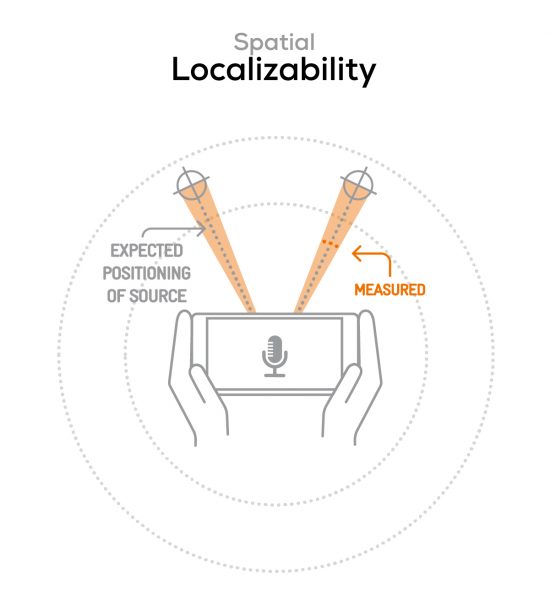We put the Huawei P50 Pro through our rigorous DXOMARK Audio test suite to measure its performance both at recording sound using its built-in microphones, and at playing audio back through its speakers.
In this review, we will break down how it fared in a variety of tests and several common use cases.
Overview
Key audio specifications include:
- top side firing + bottom side firing
- No Jack audio output
Scoring
Sub-scores and attributes included in the calculations of the global score.

Huawei P50 Pro


 65th
65th
 32nd
32nd
Playback
Pros
- Good spatial performance
- Great recording loudness
Cons
- Lack of clarity in tonal balance, especially at soft volume
- Impaired tonal balance because of strong bass resonances/distortion from nominal to max volume, due to excessive low-end processing
Recording
Pros
- Overall good tonal balance in life video and selfie as well as high SPL environments
- Very good recording loudness when recording selfies
- Good rendition of distance and wideness
Cons
- Subpar timbre in memo app
- Global compression and inaccurate envelope in most cases
- Unpredictable digital signal processing in noisy environments, and sensitivity to occlusions while recording
The Huawei P50 Pro delivers a contrasted performance in the audio department. In playback, we’d mainly recommend it for gaming thanks to its good spatial performance, and a suitable tonal balance. Music and movie playback are a little less well endowed due to a lack of clarity and strong bass resonances and distortion. As a recording device, thanks to excellent results in volume, good spatial attributes, and a harmonious frequency response in most use cases, the Huawei P50 Pro runs neck-to-neck with such skilled devices as the Samsung Galaxy S22 Ultra (Exynos), or the Xiaomi 12 Pro. The Huawei P50 Pro is particularly suited for recording in loud environments and makes a fairly good choice for selfie videos and meeting room recordings.
Test summary
About DXOMARK Audio tests: For scoring and analysis in our smartphone audio reviews, DXOMARK engineers perform a variety of objective tests and undertake more than 20 hours of perceptual evaluation under controlled lab conditions.
(For more details about our Playback protocol, click here; for more details about our Recording protocol, click here.)
The following section gathers key elements of our exhaustive tests and analyses performed in DXOMARK laboratories. Detailed performance evaluations under the form of reports are available upon request. Do not hesitate to contact us.
Playback
Huawei P50 Pro
163
DXOMARK engineers test playback through the smartphone speakers, whose performance is evaluated in our labs and in real-life conditions, using default apps and settings.
In playback tests, the P50 Pro’s stereo speakers provide good results at nominal volume with correct treble and attack, natural midrange, good wideness, realistic distance and satisfying loudness. At maximal volume, however, many artifacts arise, such as bass distortion and resonances, as well as excessive dynamic compression. At softer volumes, the tonal balance’s lack of clarity intensifies, transients become dull, and intelligibility drops. Additionally, strange volume variations often occur. All in all, the speakers are best suited for playing games, but not quite adapted for listening to music or watching movies.
Here is how the Huawei P50 Pro performs in playback use cases compared to its competitors:

Timbre
Huawei P50 Pro
158
The Timbre score represents how well a phone reproduces sound across the audible tonal range and takes into account bass, midrange, treble, tonal balance, and volume dependency. It is the most important attribute for playback.

Dynamics
Huawei P50 Pro
149
The Dynamics score measures the accuracy of changes in the energy level of sound sources, for example how precisely a bass note is reproduced or the impact sound from drums.



Spatial
Huawei P50 Pro
162
The sub-attributes for spatial tests include pinpointing a specific sound's location, its positional balance, distance, and wideness.



Volume
Huawei P50 Pro
162
The Volume score represents the overall loudness of a smartphone and how smoothly volume increases and decreases based on user input.
| Hip-Hop | Classical | |
| Huawei P50 Pro | 73.1 dBA | 70.1 dBA |
| Samsung Galaxy S22 Ultra (Exynos) | 74.1 dBA | 70.2 dBA |
| Xiaomi 12 Pro | 69.1 dBA | 66 dBA |

Artifacts
Huawei P50 Pro
157
The Artifacts score measures the extent to which the sound is affected by various types of distortion. The higher the score, the less the disturbances in the sound are noticeable. Distortion can occur because of sound processing in the device and because of the quality of the speakers.


Recording
Huawei P50 Pro
157
DXOMARK engineers test recording by evaluating the recorded files on reference audio equipment. Those recordings are done in our labs and in real-life conditions, using default apps and settings.
The P50 Pro fares incomparably better in recording. It has a fairly spectacular performance in loud environments, thanks to an elevated maximum reachable level without noticeable artifacts, and a harmonious tonal balance in high SPL scenarios. Audio in selfie videos is also on target, with satisfying loudness, sharp attack and a correct envelope, although localizability if a bit blurry. Life videos (made with the rear cameras), on the other hand, exhibit a slightly inaccurate envelope, a narrower sound field, and numerous sonic artifacts. Memos are also lagging a little bit behind, due to a subpar timbre capture, a notable lack of clarity, limited signal-to-noise ratio and, just like in life videos, many perceivable artifacts.
Here is how the Huawei P50 Pro performs in recording use cases compared to its competitors:

Timbre
Huawei P50 Pro
147
The Timbre score represents how well a phone captures sounds across the audible tonal range and takes into account bass, midrange, treble, and tonal balance. It is the most important attribute for recording.

Dynamics
Huawei P50 Pro
146
The Dynamics score measures the accuracy of changes in the energy level of sound sources, for example how precisely a voice's plosives (the p's, t's and k's, for example) are reproduced. The score also considers the Signal-to-Noise Ratio (SNR), for example how loud the main voice is compared to the background noise.



Spatial
Huawei P50 Pro
157
The sub-attributes for spatial tests include pinpointing a specific sound's location, its positional balance, distance, and wideness on the recorded audio files.



Volume
Huawei P50 Pro
170
The Volume score represents how loud audio is normalized on the recorded files and the how the device handles loud environments, such as electronic concerts, when recording.
| Meeting | Life Video | Selfie Video | Memo | |
| Huawei P50 Pro | -20.1 LUFS | -19.7 LUFS | -18.5 LUFS | -16.9 LUFS |
| Samsung Galaxy S22 Ultra (Exynos) | -28.8 LUFS | -21.7 LUFS | -21.2 LUFS | -23.9 LUFS |
| Xiaomi 12 Pro | -25.8 LUFS | -23.1 LUFS | -20.4 LUFS | -20.2 LUFS |

Artifacts
Huawei P50 Pro
145
The Artifacts score measures the extent to which the recorded sounds are affected by various types of distortions. The higher the score, the less the disturbances in the sound are noticeable. Distortions can occur because of sound processing in the device and the quality of the microphones, as well as user handling, such as how the phone is held.

Background
Huawei P50 Pro
166
Background evaluates how natural the various sounds around a voice blend into the video recording file. For example, when recording a speech at an event, the background should not interfere with the main voice, yet it should provide some context of the surroundings.



 English
English 中文
中文

DXOMARK invites our readership (you) to post comments on the articles on this website. Read more about our Comment Policy.